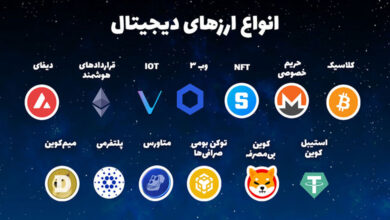The Emergence of Early Attempts at Digital Money

The Emergence of Early Attempts at Digital Money
Introduction
The emergence of early attempts at digital money—the digital currencies that reached the height of popularity over the past decade—has now transformed into one of the most important and revolutionary financial technologies. These currencies were created as alternatives to traditional financial systems, and by using innovative technologies such as blockchain, they allow users to conduct financial transactions without intermediaries like banks. While Bitcoin was introduced to the world as the first digital currency, there were earlier attempts at digital money before Bitcoin that are less well known. In this article, we will examine in detail the history of digital currencies from the early attempts, through the introduction of Bitcoin, and the subsequent growth of this market.
 The Emergence of Early Attempts at Digital Money[/caption>
The Emergence of Early Attempts at Digital Money[/caption>
The Emergence of Early Attempts at Digital Money
The first serious attempts to create digital money date back to the 1980s and 1990s. At that time, computer science experts were searching for solutions to create digital financial systems that could provide secure and rapid transactions similar to cash.
Project eCash
One of the earliest attempts to create digital money was a project called eCash, initiated by David Chaum in the 1980s. Chaum, a scientist in the field of cryptography, tried to develop a digital financial system that would guarantee both transaction security and user privacy. Chaum’s idea was based on cryptography and digital signatures, allowing users to transfer digital money anonymously.
DigiCash and Its Failure
Following these efforts, Chaum founded a company called DigiCash with the goal of commercializing the eCash system. DigiCash enabled banks to issue digital currencies that could be transferred over the internet. However, DigiCash failed to attract enough users and banks, and ultimately, due to financial difficulties and a lack of widespread acceptance, it collapsed in the late 1990s.
 The Emergence of Early Attempts at Digital Money[/caption>
The Emergence of Early Attempts at Digital Money[/caption>
The Importance of These Efforts
Although the eCash and DigiCash projects did not achieve significant success, these early attempts paved the way for a new generation of digital currencies. They demonstrated that it was possible to create digital financial systems, and that secure and anonymous transactions could be facilitated using cryptographic technologies. These concepts were later applied in the development of Bitcoin and other digital currencies.
The Emergence of Bitcoin and the Role of Satoshi Nakamoto
In 2008, an individual or group under the pseudonym Satoshi Nakamoto published the whitepaper titled “Bitcoin: A Peer-to-Peer Electronic Cash System”. In this whitepaper, Nakamoto explained how a decentralized financial system could be created without the need for intermediaries such as banks. This revolutionary idea managed to address many of the challenges faced by earlier digital financial systems.
Bitcoin: The First Decentralized Digital Currency
Bitcoin was the first digital currency to fully utilize blockchain technology to create a distributed ledger. Blockchain allows users to record transactions transparently and securely, while also benefiting from decentralization and the elimination of intermediaries. As a decentralized currency, Bitcoin is managed by a network of users (nodes) rather than a central authority like a bank.
The “Peer-to-Peer” Concept in Bitcoin
One of Bitcoin’s key features is its use of a peer-to-peer system. In this system, transactions are executed directly between two users without the need for an intermediary such as a bank. This concept transformed Bitcoin into an independent and decentralized financial system.
 The Emergence of Early Attempts at Digital Money[/caption>
The Emergence of Early Attempts at Digital Money[/caption>
Satoshi Nakamoto: The Enigma of a Persona
The true identity of Satoshi Nakamoto remains one of the greatest mysteries in the world of digital currencies. In 2009, Nakamoto released the first version of Bitcoin’s software and, as the first miner, created the first Bitcoin blockchain block, known as the genesis block, marking the inception of the Bitcoin network. Nakamoto participated in the development of Bitcoin until 2011, after which he suddenly withdrew from the project and never revealed his true identity.
Bitcoin’s Expansion and Adoption
After Bitcoin’s introduction, the digital currency gradually captured the attention of technology enthusiasts and developers. In its early years, most Bitcoin users were developers and individuals interested in blockchain technology. Over time, however, Bitcoin gained popularity as an investment tool and medium of exchange.
Bitcoin Pizza Day
One of the important milestones in Bitcoin’s history was the first Bitcoin purchase that took place on May 22, 2010. On that day, a developer named Laszlo Hanyecz bought two pizzas for 10,000 bitcoins. This transaction marked the first practical use of Bitcoin as a medium for exchanging goods and later became known as Bitcoin Pizza Day.
The Price Surge of Bitcoin
In subsequent years, the price of Bitcoin increased significantly. In 2013, the price of each Bitcoin reached around a thousand dollars, and Bitcoin emerged as an investment asset. This price surge attracted the attention of investors and major companies towards Bitcoin.
The Emergence of Altcoins
Following Bitcoin’s success, many developers decided to create new digital currencies known as altcoins. Altcoins aimed to address some of Bitcoin’s shortcomings or add new features to digital financial systems.
Litecoin: The First Successful Altcoin
One of the first successful altcoins was Litecoin, introduced by Charlie Lee in 2011. Litecoin was designed to offer faster transactions and lower fees compared to Bitcoin. Although Litecoin does not directly compete with Bitcoin, it has managed to establish itself as a reputable altcoin in the digital currency market.
Ethereum and Smart Contracts
Another prominent altcoin is Ethereum, which was introduced in 2015 by Vitalik Buterin. Ethereum elevated the digital currency market by introducing the concept of smart contracts. Smart contracts allow users to execute transactions and digital agreements automatically, without intermediaries. This feature has made Ethereum one of the largest and most reputable digital currencies.
Global Expansion and Adoption
Over time, digital currencies have managed to secure a significant place in global financial markets. Major companies like Tesla, Microsoft, and PayPal began accepting Bitcoin and other digital currencies as payment methods. Additionally, some countries, such as El Salvador, have recognized Bitcoin as an official currency.
Challenges and Regulations
Despite the remarkable growth of digital currencies, the market still faces legal challenges. Many countries continue to strive to develop appropriate regulations to control and manage the digital currency market. Moreover, the extreme price volatility of digital currencies has raised concerns among investors about the risks associated with investments in this market.
Conclusion
The history of digital currencies demonstrates how this technology evolved from early experiments in the 1980s and 1990s to the introduction of Bitcoin and the subsequent expansion of the digital currency market. Bitcoin, as the first successful digital currency, paved the way for the development of altcoins and the global acceptance of digital money. Today, digital currencies are recognized as one of the key financial technologies, and their future looks promising. However, regulatory challenges and market volatility remain significant issues that need to be addressed.







